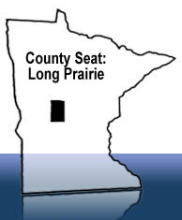Smart Conduit Considerations for Forward-Looking Communities
Local governments are often looking for low-risk options for expanding broadband access to residents and local businesses. There are not many. Seattle put some extra conduit in the ground as a part of a different project that was tearing up the streets but Comcast was the only provider interested.
The problem with a haphazard program of putting conduit in the ground is that while it benefits existing providers, it does very little to help new entrants. And conduit is inherently limited -- only a few providers can benefit from it and when used up, there is no space for more providers.
In short, more conduit may slightly improve the status quo but it does little to get us to a future where residents and local businesses have a variety of choices from service providers offering fast, reliable, and affordable access to the Internet.
Smart conduit policy can lay the groundwork for lowering the cost of a community network, which can get us where we want to be. It may take time, but will create benefits far more rapidly than private providers will be building next-generation networks in most of our communities.
John Brown, a friend from Albuquerque, New Mexico, has offered some tips for communities that want to develop smart conduit policies. Brown runs CityLink Telecommunications, an impressive privately owned, open access, FTTH network that connects residents, businesses, schools, muni buildings, etc.
We tend not to support privately owned networks because for all the great work a companiy like CityLink Fiber does, one does not know who will own it in 5, 10, or 20 years. However, we recognize that CityLink Fiber is a far better partner for communities than the vast majority of companies in this space.
The following comments are taken from an email he shared with me and is permitting me to republish. Direct quotes are indented and the rest is paraphrased.
Not all conduit is created equal. A 2 inch pipe will be sufficient for perhaps 2 providers. If conduit does not have inter-duct, it is much harder for multiple providers to share it. Inter-duct creates channels within the conduit that allows a provider to pull its fiber cables through without disturbing other cables in the conduit.



